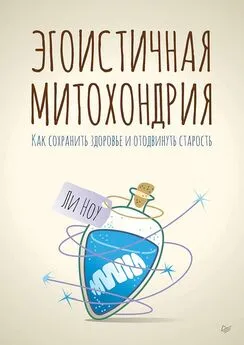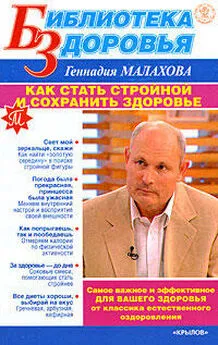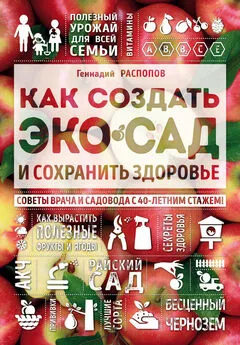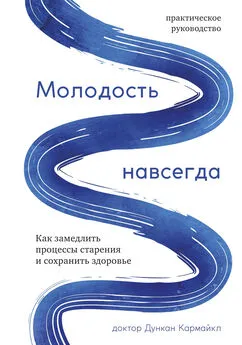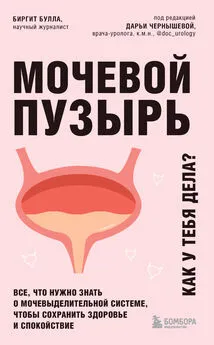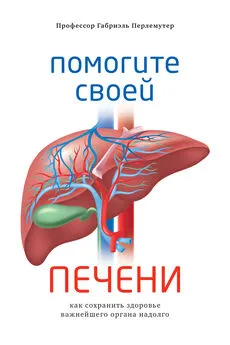Ли Ноу - Эгоистичная митохондрия. Как сохранить здоровье и отодвинуть старость
- Название:Эгоистичная митохондрия. Как сохранить здоровье и отодвинуть старость
- Автор:
- Жанр:
- Издательство:Питер
- Год:2020
- Город:Санкт-Петербург
- ISBN:978-5-4461-1021-6
- Рейтинг:
- Избранное:Добавить в избранное
-
Отзывы:
-
Ваша оценка:
Ли Ноу - Эгоистичная митохондрия. Как сохранить здоровье и отодвинуть старость краткое содержание
В нашем организме работают крошечные «энергетические станции» — митохондрии. Именно они отвечают за наше здоровье и отличное самочувствие. Когда они работают хорошо, мы не испытываем недостатка в энергии. А когда плохо — страдаем от заболеваний. Доктор Ли Ноу открывает тайну: заболевания, которые кажутся не связанными между собой на первый взгляд: диабет, рак, шизофрения, хроническая усталость, болезнь Паркинсона и другие — имеют общую природу.
Сегодня нам известно, как улучшить работу митохондрий, обеспечивающих организм энергией на 90 %. В этой книге вас ждет актуальная информация о питании, образе жизни, кетогенной диете и добавках, которые возвращают здоровье митохондриям, а следовательно, и нам.
Эгоистичная митохондрия. Как сохранить здоровье и отодвинуть старость - читать онлайн бесплатно ознакомительный отрывок
Интервал:
Закладка:
Bengtsson A., Heriksson K. G., Larsson J. Reduced high-energy phosphate levels in the painful muscles of patients with primary fibromyalgia. Arth Rheum. 1986 Jul; 29(7):817–21. doi:10.1002/art.1780290701.
Bengtsson A., Henriksson K. G. The muscle in fibromyalgia — a review of Swedish studies. J Rheumatol Suppl. 1989 Nov; 19:144–9.
Brault J. J., Terjung R. L. Purine salvage to adenine nucleotides in different skeletal muscle fiber types. J Appl Physiol. 2001; 91:231–8.
Chatham J. C., et al. Studies of the protective effect of ribose in myocardial ischaemia by using 31P-nuclear magnetic resonance spectroscopy. Biochem Soc Proc. 1985 Oct; 13(5):885–8. doi:10.1042/bst0130885.
Clay M. A., et al. Chronic alcoholic cardiomyopathy. Protection of the isolated ischemic working heart by ribose. Biochem Int. 1988 Nov; 17(5):791–800.
Dodd S. L., et al. The role of ribose in human skeletal muscle metabolism. Med Hypotheses. 2004; 62(5):819–24. doi:10.1016/j.mehy.2003.10.026.
Dow J., et al. Adenine nucleotide synthesis de novo in mature rat cardiac myocytes. Biochim Biophys Acta. 1985 Nov 20; 847(2):223–7. doi:10.1016/0167-4889(85)90024-2.
Ellison G. M., et al. Physiological cardiac remodelling in response to endurance exercise training: cellular and molecular mechanisms. Heart (British Cardiac Society). 2012 Jan; 98(1):5–10.
Enzig S., et al. Myocardial ATP repletion with ribose infusion. Pediatr Res. 1985; 19:127A.
Gebhart B., Jorgenson J. A. Benefit of ribose in a patient with fibromyalgia. Pharmacotherapy. 2004 Nov; 24(11):1646–8. doi:10.1592/ phco.24.16.1646.50957.
Gross M., Kormann B., Zollner N. Ribose administration during exercise: effects on substrates and products of energy metabolism in healthy subjects and a patient with myoadenylate deaminase deficiency. Klin Wochenschr. 1991; 69(4):151–5.
Harmsen E., et al. Enhanced ATP and GTP synthesis from hypoxanthine or inosine after myocardial ischemia. Am J Physiol. 1984 Jan; 246(1 Pt 2): H37–H43.
Hass G. S., et al. Reduction of postischemic myocardial dysfunction by substrate repletion during reperfusion. Circulation. 1984 Sep; 70(3 Pt 2):165–74. Hellsten Y., Skadhauge L., Bangsbo J. Effect of ribose supplementation on resynthesis of nucleotides after intense intermittent training in humans. Am J Physiol. 2004 Jan 1; 286(1): R182–R188. doi:10.1152/ajp-regu.00286.2003.
Ibel H., Zimmer H. G. Metabolic recovery following temporary regional myocardial ischemia in the rat. J Mol Cell Cardiol. 1986; 18(Suppl 4):61–5. Ingwall J. S., Weiss R. G. Is the failing heart energy starved? On using chemical energy to support cardiac function. Circ Res. 2004 Jul 23; 95(2):135–45. doi:10.1161/01.RES.0000137170.41939.d9.
LaNoue K. F., Watts J. A., Koch C. D. Adenine nucleotide transport during cardiac ischemia. Am J Physiol. 1981 Nov; 241(5):H663–H671.
Lund N., Bengtsson A., Thorborg P. Muscle tissue oxygen in primary fibromyalgia. Scan J Rheumatol. 1986; 15(2):165–73. doi:10.3109/03009748609102084.
Mahoney J. R. Jr. Recovery of postischemic myocardial ATP levels and hexosemonophosphate shunt activity. Med Hypoth. 1990 Jan; 31(1):21–3. doi:10.1016/0306-9877(90)90047-I.
Maron B. J., Pelliccia A. The heart of trained athletes: cardiac remodeling and the risks of sports, including sudden death. Circulation. 2006 Oct 10; 114(15):1633–44. doi:10.1161 /CIRCULATIONAHA.106.613562.
Muller C., et al. Effect of ribose on cardiac adenine nucleotides in a donor model for heart transplantation. Eur J Med Res. 1998 Dec 16; 3(12):554–8.
Omran H., et al. D-ribose improves diastolic function and quality of life in congestive heart failure patients: a prospective feasibility study. Eur J Heart Fail. 2003 Oct;5(5):615–9. doi:10.1016/S1388-9842(03)00060-6.
Omran H., et al. D-ribose aids congestive heart failure patients. Exp Clin Cardiol. 2004 Summer; 9(2):117–8.
Pauly D. F., Johnson C., St. Cyr J. A. The benefits of ribose in cardiovascular disease. Med Hypotheses. 2003 Feb; 60(2):149–51.
Pauly D. F., Pepine C. J. D-ribose as a supplement for cardiac energy metabolism. J Cardiovasc Pharmacol Ther. 2000 Oct; 5(4):249–58. doi:10.1054/ JCPT.2000.18011.
Pauly D. F., Pepine C. J. Ischemic heart disease: metabolic approaches to management. Clin Cardiol. 2004; 27(8):439–4l. doi:10.1002/ clc.4960270802.
Pelliccia A., Di Paolo F. M., Maron B. J. The athlete’s heart: remodeling, electrocardiogram and preparticipation screening. Cardiol Rev. 2002 Mar — Apr; 10(2):85–90.
Perkowski D., et al. D-ribose improves cardiac indices in patients undergoing «off» pump coronary arterial revascularization. J Surg Res. 2007; 137(2)295.
Pliml W., et al. Effects of ribose on exercise-induced ischaemia in stable coronary artery disease. Lancet. 1992 Aug 29; 340(8818):507–10. doi:10.1016/0140-6736(92)91709-H.
Pouleur H. Diastolic dysfunction and myocardial energetics. Eur Heart J. 1990 May; 11(Suppl C):30–4. doi:10.1093/eurheartj/11.suppl_C.30.
Rich B. S., Havens S. A. The athletic heart syndrome. Curr Sports Med Rep. 2004 Mar; 3(2):84–8.
Sami H., Bittar N. The effect of ribose administration on contractile recovery following brief periods of ischemia. Anesthesiology. 1987; 67(3A):A74. Schachter C. L., et al. Effects of short versus long bouts of aerobic exercise in sedentary women with fibromyalgia: a randomized controlled trial. Phys Ther. 2003 Apr; 83(4):340–58.
Sinatra S. T. The Sinatra solution: metabolic cardiology. Laguna Beach, CA: Basic Health Publications, Inc; 2011.
Taegtmeyer H. Metabolism — the lost child of cardiology. J Am Coll Car-diol. 2000; 36(4):1386–8.
Taegtmeyer H., et al. Energy metabolism in reperfused heart muscle: Metabolic correlates to return of function. J Am Coll Cardiol. 1985 Oct; 6(4):864–70. doi:10.1016/S0735-1097 (85)80496-4.
Taegtmeyer H., King L. M., Jones B. E. Energy substrate metabolism, myocardial ischemia, and targets for pharmacotherapy. Am J Cardiol. 1998 Sep 3; 82(5A):54K–60K. doi:10.1016 /S0002-9149(98)00538-4.
Teitelbaum J. E., Johnson C., St. Cyr J. The use of D-ribose in chronic fatigue syndrome and fibromyalgia: a pilot study. J Altern Complement Med. 2006 Nov;12(9)857–62. doi:10.1089 /acm.2006.12.857.
Tullson P. C., Terjung R. L. Adenine nucleotide synthesis in exercising and endurance-trained skeletal muscle. Am J Physiol. 199l Aug; 261: C. 342–C. 347.
Van Gammeren D., Falk D., Antonio J. The effects of four weeks of ribose supplementation on body composition and exercise performance in healthy, young male recreational bodybuilders: a double-blind, placebo-controlled trial. Curr Ther Res. 2002 Aug; 63(8): 486–95. doi:10.1016/ S0011-393X(02)80054-6.
Wilson R., MacCarter D., St. Cyr J. D-ribose enhances the identification of hibernating myocardium. Heart Drug. 2003; 3:61–2. doi:10.1159/000070908. Zarzeczny R., et al. Influence of ribose on adenine salvage after intense muscle contractions. J Appl Physiol. 2001; 91:1775–81.
Zimmer H. G. Restitution of myocardial adenine nucleotides: acceleration by administration of ribose. J Physiol (Paris). 1980; 76(7):769–75.
Zimmer H. G. Significance of the 5-phosphoribosyl-1-pyrophosphate pool for cardiac purine and pyrimidine nucleotide synthesis: studies with ribose, adenine, inosine, and orotic acid in rats. Cardiovasc Drug Ther. 1998 Apr; 12(Suppl 2):179–87.
Zimmer H. G., et al. Ribose intervention in the cardiac pentose phosphate pathway is not species-specific. Science. 1984 Feb 17; 223(4637):712–4. doi:10.1126/science.6420889.
Zimmer H. G., Ibel H. Effects of ribose on cardiac metabolism and function in isoproterenol treated rats. Am J Physiol. 1983 Nov; 245: H880–H886.
Aizenman E., et al. Interaction of the putative essential nutrient pyrroloquinoline quinone with the N-methyl-daspartate receptor redox modulatory site. J Neurosci. 1992 Jun; 12(6):2362–9.
Aizenman E., et al. Further evidence that pyrroloquinoline quinone interacts with the N-methyl — aspartate receptor redox site in rat cortical neurons in vitro. Neurosci Lett. 1994 Feb 28; 168(1–2):189–92. doi:10.1016/0304-3940(94)90447-2.
Bauerly K. A., et al. Pyrroloquinoline quinone nutritional status alters lysine metabolism and modulates mitochondrial DNA content in the mouse and rat. Biochim Biophys Acta. 2006 Nov; 1760(11):1741–8. doi:10.1016/j. bbagen.2006.07.009.
Chowanadisai W., et al. Pyrroloquinoline quinone (PQQ) stimulates mitochondrial biogenesis. FASEB J. 2007 Apr; 21:854. doi:10.1074/jbc. M109.030130.
Chowanadisai W., et al. Pyrroloquinoline quinone stimulates mitochondrial biogenesis through cAMP response element-binding protein phosphorylation and increased PGC-1α expression. J Biol Chem. 2010 Jan 1; 285(1):142–52. doi:10.1074/jbc.M109.030130.
Debray F. G., Lambert M., Mitchell G. A. Disorders of mitochondrial function. Curr Opin Pediatr. 2008 Aug; 20(4):471–82. doi:10.1097/ MOP.0b013e328306ebb6.
Felton L. M., Anthony C. Biochemistry: role of PQQ as a mammalian enzyme cofactor? Nature. 2005 Feb 3; 433(7025):E10; discussion E11–E12. doi:10.1038/nature03322.
Harris C. B., et al. Dietary pyrroloquinoline quinone (PQQ) alters indicators of inflammation and mitochondrial-related metabolism in human subjects. J Nutr Biochem. 2013 Dec; 24(12):2076–84. doi:10.1016/j.jnut-bio.2013.07.008.
Hirakawa A., et al. Pyrroloquinoline quinone attenuates iNOS gene expression in the injured spinal cord. Biochem Biophys Res Commun. 2009 Jan 9; 378(2):308–12. doi:10.1016 /j.bbrc.2008.11.045.
Jensen F. E., et al. The putative essential nutrient pyrroloquinoline quinone is neuroprotective in a rodent model of hypoxic/ischemic brain injury. Neuroscience. 1994 Sep;62(2):399–406. doi:10.1016/0306-4522(94)90375-1.
Kasahara T., Kato T. Nutritional biochemistry: a new redox-cofactor vitamin for mammals. Nature. 2003 Apr 24; 422:832. doi:10.1038/422832a. Kumazawa T., Seno H., Suzuki O. Failure to verify high levels of pyrroloquinoline quinone in eggs and skim milk. Biochem Biophys Res Commun. 1993 May 28; 193(1):1–5. doi:10.1006 /bbrc.1993.1581.
Kumazawa T., et al. Levels of pyrroloquinoline quinone in various foods. Biochem J. 1995;307: 331–3. doi:10.1042/bj3070331.
Kumazawa T., et al. Activation of ras signaling pathways by pyrroloquinoline quinone in NIH3T3 mouse fibroblasts. Int J Mol Med. 2007 May; 19(5):765–70. doi:10.3892/ijmm.19.5.765.
Li H. H., et al. Pyrroloquinoline quinone enhances regeneration of transected sciatic nerve in rats. Chin J Traumatol. 2005 Aug; 8(4):225–9.
Magnusson O. T., et al. Quinone biogenesis: structure and mechanism of PqqC, the final catalyst in the production of pyrroloquinoline quinone. Proc Natl Acad Sci U S A. 2004 May 25;101(21):7913–8. doi:10.1073/ pnas.0402640101.
Magnusson O. T., et al. Pyrroloquinoline quinone biogenesis: characterization of PqqC and its H84N and H84A active site variants. Biochemistry. 2007; 46(24):7174–86. doi:10.1021 /bi700162n.
Matsushita K., et al. Escherichia coli is unable to produce pyrroloquinoline quinone (PQQ). Microbiology. 1997; 143:3149–56. doi:10.1099/00221287-143-10-3149.
Читать дальшеИнтервал:
Закладка:
